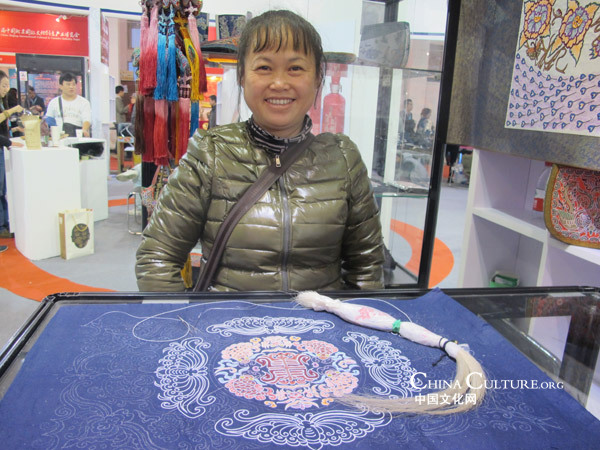Horsetail embroidery, listed into a national intangible cultural heritage in 2006, is a special art form handed down from generation to generation among the women of the Shui ethnic group.
It is an existing primitive art form and is considered a "living fossil" of Chinese embroidery. It is also very important for research on the unique customs of the Shui ethnic group.

Song Shuixian, an inheritor of the Shui ethnic group's horsetail embroidery, shows her works at the 8th China Beijing International Culture & Creation Industry Expo (ICCIE) on Nov 10.[Photo by Yang Qi/chinaculture.org]
The embroidery method of a silk thread entwining pieces of horsetail hair to create different patterns is obviously advantageous in two points: first, the relatively strong horsetail hair can protect the patterns from deforming; second, horsetail hair is non-perishable and durable. What's more, horsetail may have constituents of oil which are good for maintaining the luster of surrounding silk threads.
It is a very complicated procedure to complete a horsetail embroidery item. An item thus produced presents a low-relief appearance with an abstract and exaggerated shape. The horsetail embroidery is chiefly used to make T-shaped bags for carrying babies on the back ("Dai Jie" in the Shui language), embroidered shoes ("Zhe Jie" in the Shui language) with an upward toe, corsets and pectoral plates for women, bonnets, pouches, protective casings for scabbards, and so on. Despite changes in times and environment, the modeling concept and stylized symbols of the horsetail embroidery have remained basically unchanged. (video by Yang Qi)
Related reading:
